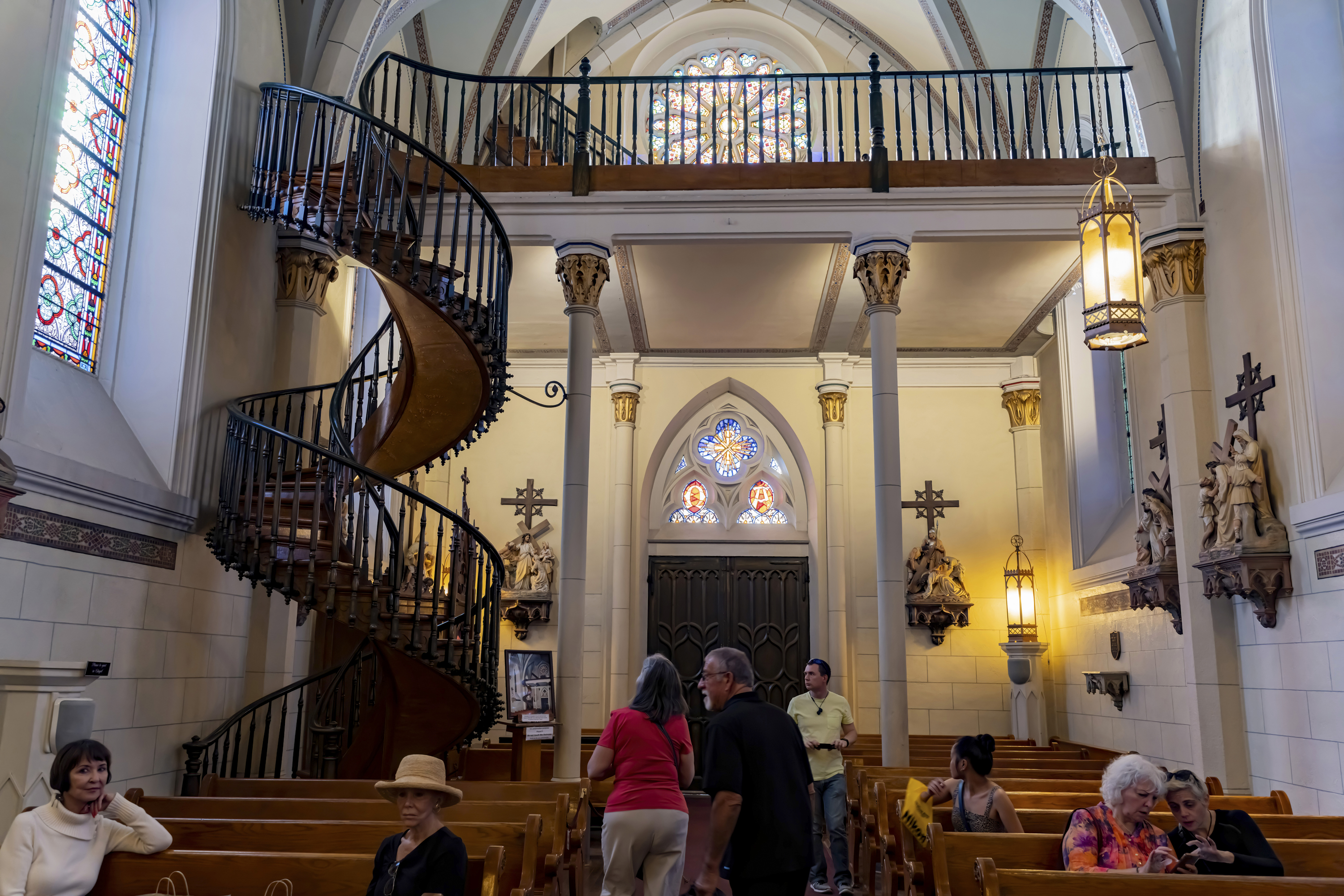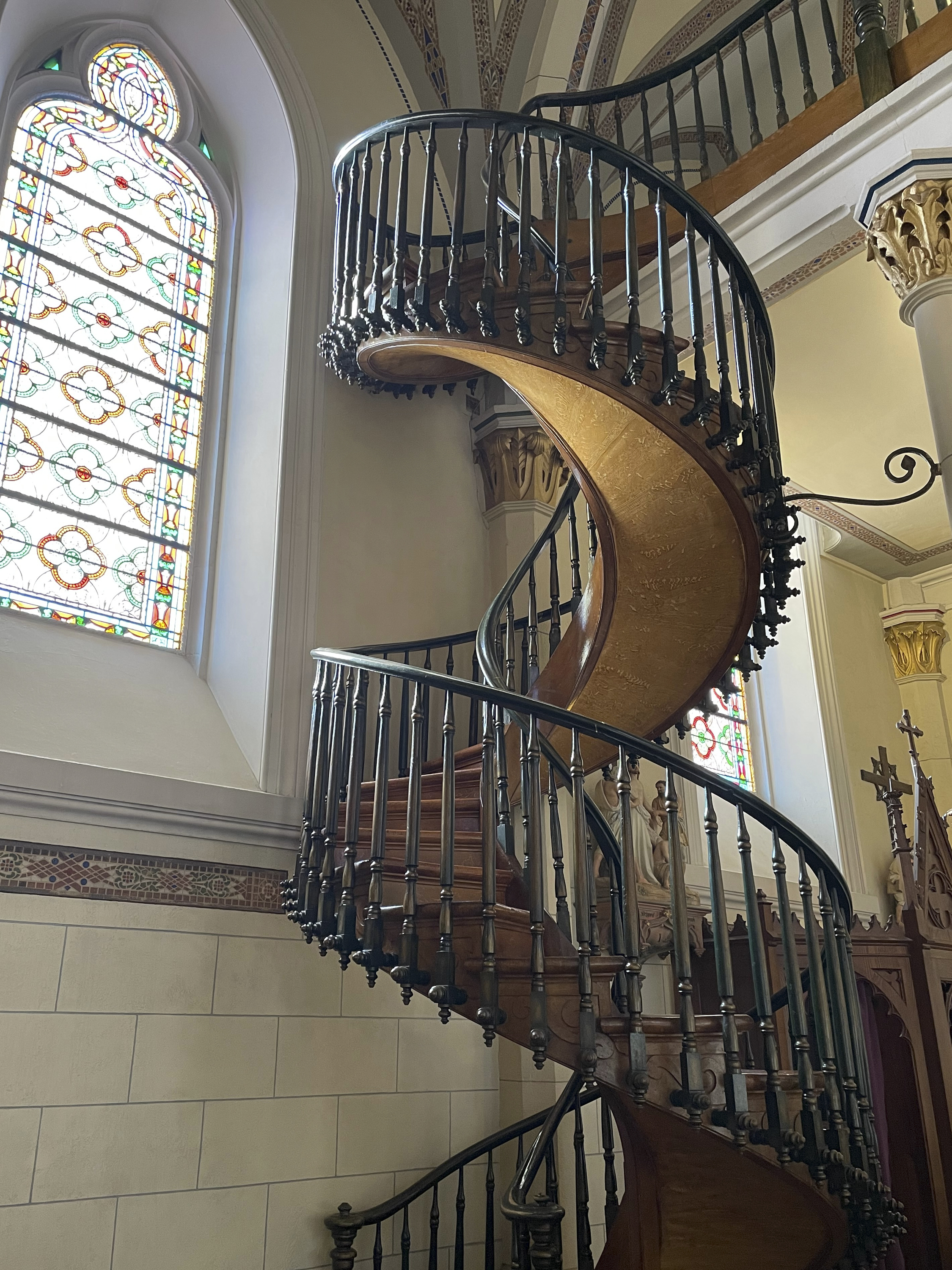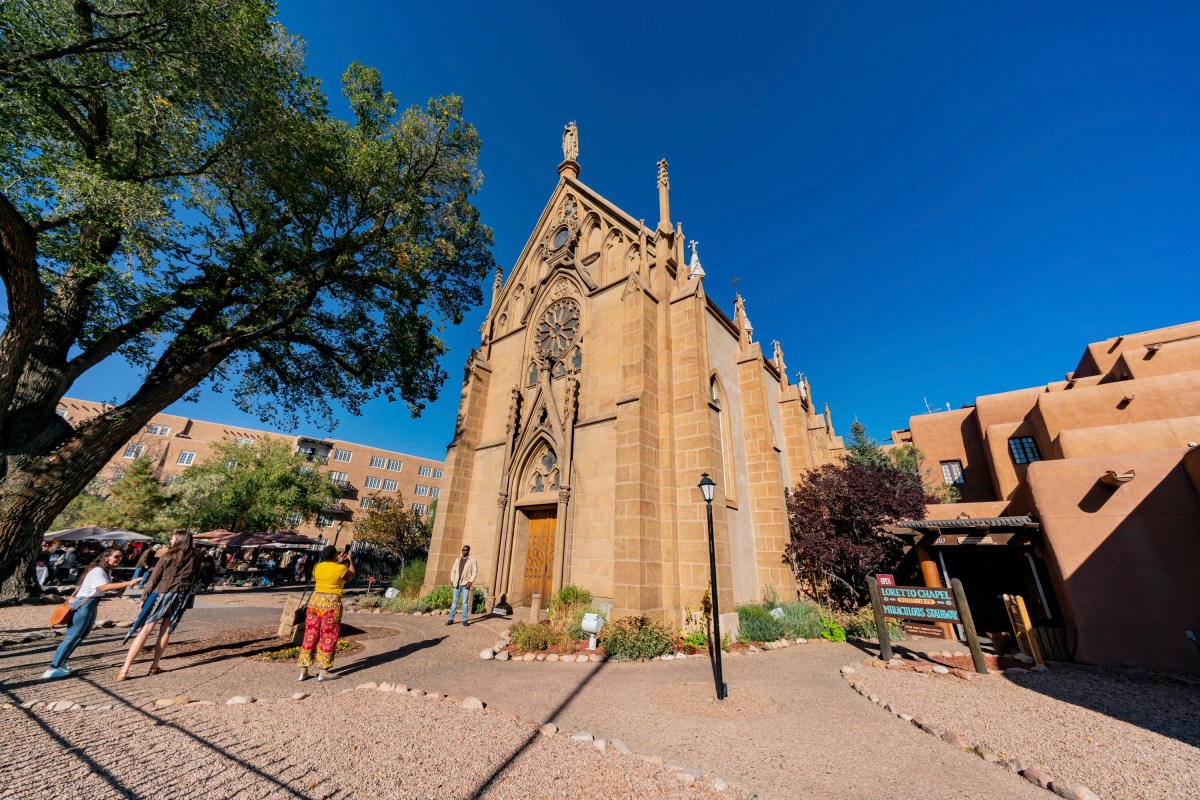Lenten Campaign 2025
This content is free of charge, as are all our articles.
Support us with a donation that is tax-deductible and enable us to continue to reach millions of readers.
The staircase of Loretto Chapel in Santa Fe, New Mexico is well known for at least two reasons: the somewhat mysterious identity of its builder, and the physics of its structure.
The fact that the structure can stand on its feet without any kind of central support attached to it has rendered it, for many, a miracle of sorts. It is indeed an architectonical marvel, in that sense.
In 1852, by order of the then bishop of Santa Fe, Jean Baptiste Lamy, the Chapel of Our Lady of Light (inspired by the Sainte-Chapelle in Paris) was built. It was placed under the care of the Sisters of Loretto, who were to arrive from Kentucky to found a school for girls.

Some local pious traditions claim that when the chapel was ready, builders were faced with an allegedly unexpected problem: there was no way to climb from the nave to the choir, on the second floor. Some say it was a sad error in the design –one that the building’s architect, Antonio Mouly, could not solve, since he had already passed away . However, an accomplished architect like Mouly could not have failed to design an access to the choir. Most likely, he had a spiral-shaped staircase in mind.
A novena and a surprise appearance
Be that as it may, tradition claims that when the nuns insisted on building a staircase, the builders told them that, without Mouly’s design, it would be virtually impossible. Also, building a normal, regular ladder would take too much room. It is said that they even advised the nuns to demolish the choir. The nuns, legend has it, decided they would pray a novena to St. Joseph, patron saint of carpenters, asking for another solution.
After finishing the novena, the story goes, a man appeared at the door of the chapel, saying that he could build a stairway, under one condition: he be granted total privacy.
The stranger locked himself in the chapel for three months with a saw, a square and a few other simple tools, and disappeared as soon as the work was finished. Local tradition claims he didn’t even ask for any payment for his services.

An impressive piece of architecture
The staircase, which is around six meters high, takes two full turns over its axis until it reaches the choir. According to some, the structure should have collapsed the very first moment someone used it, although the central spiral staircase is narrow enough to work as a central support on its own —quite an architectonical accomplishment indeed.
In any case, the original staircase was not attached to any wall until 1887, ten years later, when the railing was added, and the outer spiral was attached to a nearby pillar.
The very same pious traditions claim the mystery of the identity of the carpenter has never been satisfactorily solved, and that there is not even a delivery report that might help decipher where the wood came from –although some local historians claim the nuns keep some of this information in their archives. During those three months, no one saw anyone entering or leaving the chapel.
As the carpenter left before the Mother Superior could pay him, the Sisters of Loretto offered a reward to anyone who could his make identity known, but no one ever showed up. So, since then, the crafting of the staircase has been attributed to St. Joseph himself.











